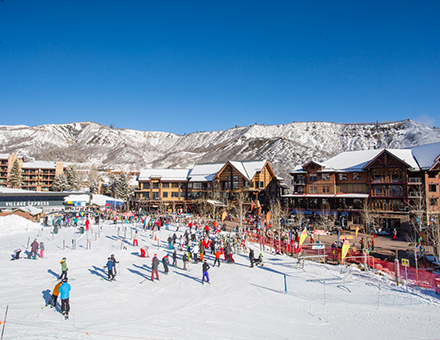SAM Magazine—Winter Park, Colo., Feb. 16, 2022—Momentum from the red-hot holiday season turned cool in early January as a surge in new cases of the Omicron variant put a damper on short-lead bookings, according to the most recent Monthly Market Briefing released by DestiMetrics, the business intelligence division of Inntopia.  Aspen SnowmassA review of the data from 18 western mountain destinations in seven states revealed that the Omicron surge had a strong influence on booking patterns and shows a clear correlation that as cases rise, bookings decline, and when cases begin to drop, bookings go up.
Aspen SnowmassA review of the data from 18 western mountain destinations in seven states revealed that the Omicron surge had a strong influence on booking patterns and shows a clear correlation that as cases rise, bookings decline, and when cases begin to drop, bookings go up.
January occupancy was up 39.8 percent compared to 2021, when resorts had more stringent Covid limitations and restrictions in place. Compared to pre-pandemic January 2020, though, occupancy was down 3.7 percent. The average daily rate (ADR) was up 37.9 percent compared to last year, and up 21.5 percent compared to January 2020. That translated to revenue gains of 92.7 percent compared to 2021 and 17 percent compared to 2020.
The Omicron impact. Bookings made in January for arrivals through June continued upward, but the Omicron impact was apparent. Bookings made in January for same-month arrival were down 63.4 percent compared to last year; January bookings for February arrivals were down 33.1 percent. That pattern was similar to two years ago, when Covid was beginning to register on people's radar.
“While last year at this time we saw a surge in bookings as vaccines were being rolled out, the recent Omicron surge in early January this year resulted in a slowing of overall bookings, but particularly for short-lead arrivals," observed Tom Foley, senior vice president of business process and analytics for Inntopia. "But as new cases began to ebb, booking volume started returning, and that improving trend should help bolster an even stronger late February and March.”
A shift in demand? As of Jan. 31, bookings for the full winter season, including actual results from the first three months of the season and on-the-books results for the final three months of the season, are up 48.7 percent compared to last winter at this time and up 5.7 percent compared to two years ago. Daily rates are up 26.9 percent compared to two years ago, and properties are showing a 34 percent increase in seasonal revenues.
“Destinations continue to set record revenue numbers, driven primarily by sustained high rates and supported by strong occupancy,” said Foley. “But the meteoric gains through summer 2021 and this year’s early season seem to be diminishing a bit, as November and January actual occupancy both finished below those pre-pandemic months in winter 2019-20. This is likely due to the influence of both the Omicron effect and a shift in overall demand, and something we will be watching with close attention in the next few months.”




